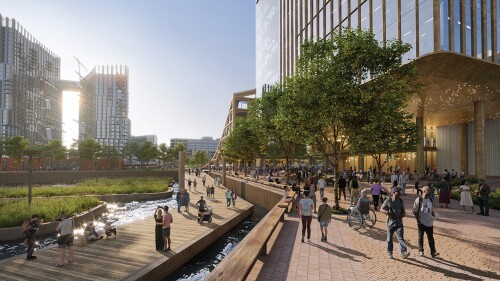A new ULI report explores factors that hamper retail development in some lower-income communities and offers solutions to overcome the dearth of shopping options for neighborhood residents.
Retail in Underserved Communities defines underserved communities as those that fall into one or more of four categories: urban locations lacking businesses, underserviced markets, locations without cultural offerings, and isolated rural or small towns. “Although several causes are often identified as common to underserved markets, the essence of the problem is most often weak market conditions,” says the report. “The creation of a local economy where investors, property owners, the government, and retailers make market-rate decisions and obtain satisfactory returns on investment is critical to success.”
Related: Coverage of ULI webinar on this report
Authored by ULI senior resident fellow Maureen McAvey and Bridget Lane, director of Business Districts Inc. in Evanston, Illinois, the report is based on observations from industry experts at a ULI forum held in February 2014 that included representatives from ULI, the U.S. Department of Housing and Urban Development, and the International Council of Shopping Centers.
The report, which focuses primarily on urban underserved markets, includes case studies of the East Liberty neighborhood of Pittsburgh; Union Market in Washington, D.C.; and Old Spanish Trail in Houston, exploring how retail development sparked ongoing revitalization efforts.
In East Liberty, the catalyst was a Home Depot committing to locate in the neighborhood, resulting in additional retail development and community reinvestment. Union Market’s revival was spurred by an emphasis on fresh, local food and the provision of space for community events, positioning it as vibrant gathering place. In the Old Spanish Trail area, the development of a neighborhood center by a community development corporation partnership brought retailers, a grocery store, and medical service providers as well as other services to the area. Parks and civic space are planned as the revitalization continues.
Among the lessons learned from the three case studies are these:
- Sustained leadership is essential to keep a project on track to completion;
- A “bridge” location that reaches low- and high-income populations is a plus;
- Sharing risk between the private and public sectors helps boost prospects for success;
- Public sector commitments to maintain and improve infrastructure in the area are critical;
- A focus on managing growth, rather than on stemming decline or protecting the status quo, is needed;
- The land value needs to be captured after the project is completed;
- Focusing on food responds to the national emphasis on providing healthier eating choices in underserved neighborhoods;
- The dense layout of urban underserved communities is conducive to mixed-use projects that include residential space on top of a variety of retail and commercial spaces; and
- Retail development provides prime employment opportunities for the unemployed and underemployed, as well as opportunities for new entrepreneurs to enter the area.
Trisha Riggs is ULI vice president of strategic communications.
Tour Union Market on Google Street View:
View Union Market DC in a larger map
View Union Market DC in a larger map





